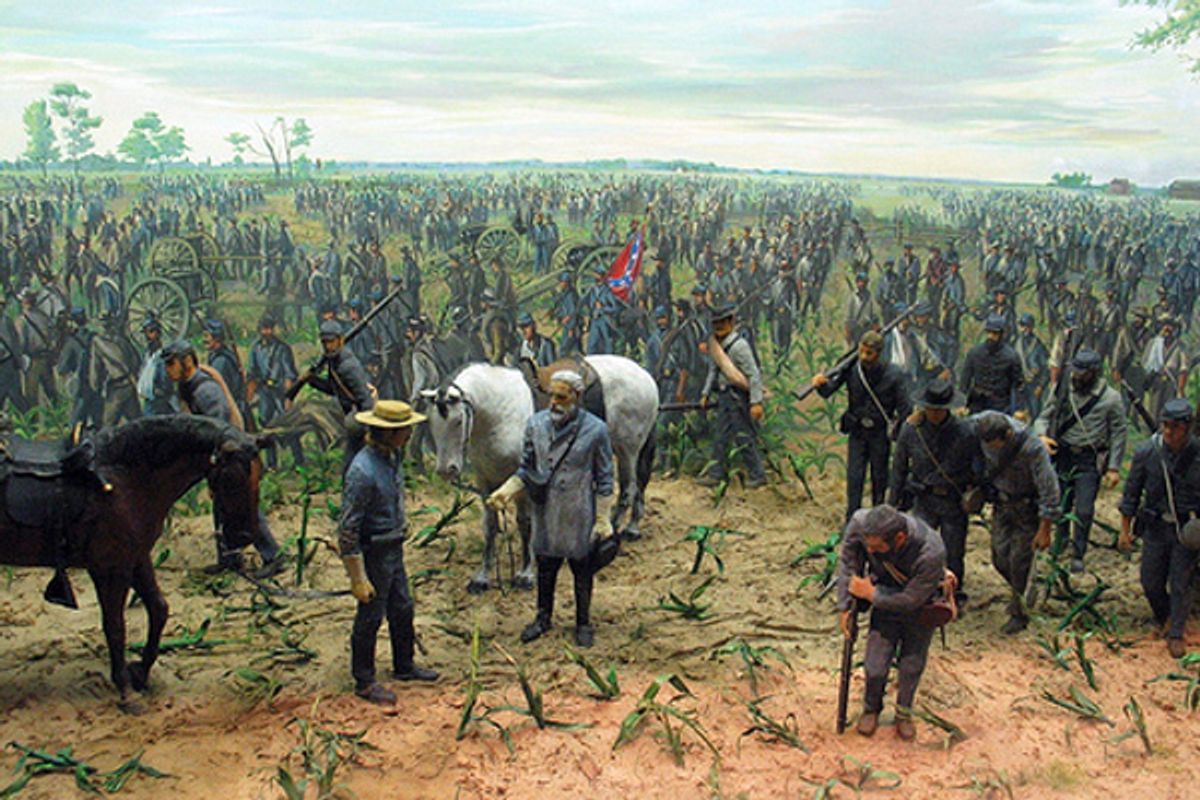Witnessing the battle at Chancellorsville, Whitman wrote about the haunting beauty of nature juxtaposed with terrible suffering: "Amid the woods, that scene of flitting souls -- amid the crack and crash and yelling sounds -- the impalpable perfume of the woods -- and yet the pungent, stifling smoke -- the radiance of the moon." In the absence of politically motivated shrines, nostalgic reenactors or Walmart parking lots, the battlefields of the past tend to be peaceful places of contemplation -- blank, benign spaces where we are required to re-create this stark juxtaposition, filling in the horror and conjuring up the history with our imagination.
Does visiting a battlefield make war "real" for those who have never experienced it -- I don't think so. It does, however, give us a deeper and more concrete understanding of historical events as physical experiences, rather than academic esoterica, allowing us to contemplate the terrain, the terrible logistics of war, and the tactics employed by the winners and losers. While we can't feel the wounds, we can sense the scars and wonder how it must have been.
You can find more places related to wars on Trazzler.



Shares